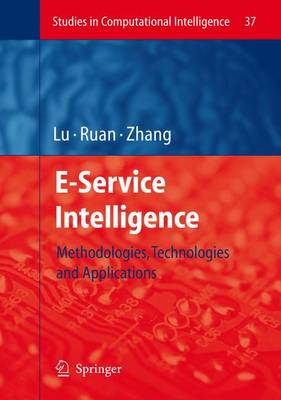Studies in Computational Intelligence
2 primary works
Book 37
Business organizations and governments are nowadays developing and providing internet based electronic services (e-services) featuring various intelligent functions. This book offers a thorough introduction and systematic overview of the new field e-service intelligence. It covers the state-of-the-art of e-service intelligence including both theorems and applications, and a broad range of topics are discussed.
Book 238
Cognition-Driven Decision Support for Business Intelligence
by Li Niu, Assistant Professor of Government Jie Lu, and Guangquan Zhang
Cognition-driven decision support system (DSS) has been recognized as a paradigm in the research and development of business intelligence (BI). Cognitive decision support aims to help managers in their decision making from human cognitive aspects, such as thinking, sensing, understanding and predicting, and fully reuse their experience. Among these cognitive aspects, decision makers' situation awareness (SA) and mental models are considered to be two important prerequisites for decision making, particularly in ill-structured and dynamic decision situations with uncertainties, time pressure and high personal stake. In today's business domain, decision making is becoming increasingly complex. To make a successful decision, managers' SA about their business environments becomes a critical factor.
This book presents theoretical models as well practical techniques of cognitiondriven DSS. It first introduces some important concepts of cognition orientation in decision making process and some techniques in related research areas including DSS, data warehouse and BI, offering readers a preliminary for moving forward in this book. It then proposes a cognition-driven decision process (CDDP) model which incorporates SA and experience (mental models) as its central components. The goal of the CDDP model is to facilitate cognitive decision support to managers on the basis of BI systems. It also presents relevant techniques developed to support the implementation of the CDDP model in a BI environment. Key issues addressed of a typical business decision cycle in the CDDP model include: natural language interface for a manager's SA input, extraction of SA semantics, construction of data warehouse queries based on the manger's SA and experience, situation information retrieval from data warehouse, how the manager perceives situation information and update SA, how the manager's SA leads to a final decision. Finally, a cognition-driven DSS, FACETS, and two illustrative applications of this system are discussed.

